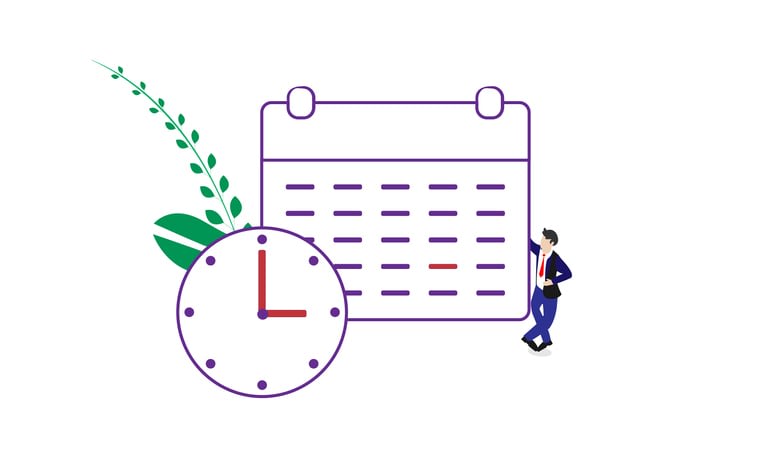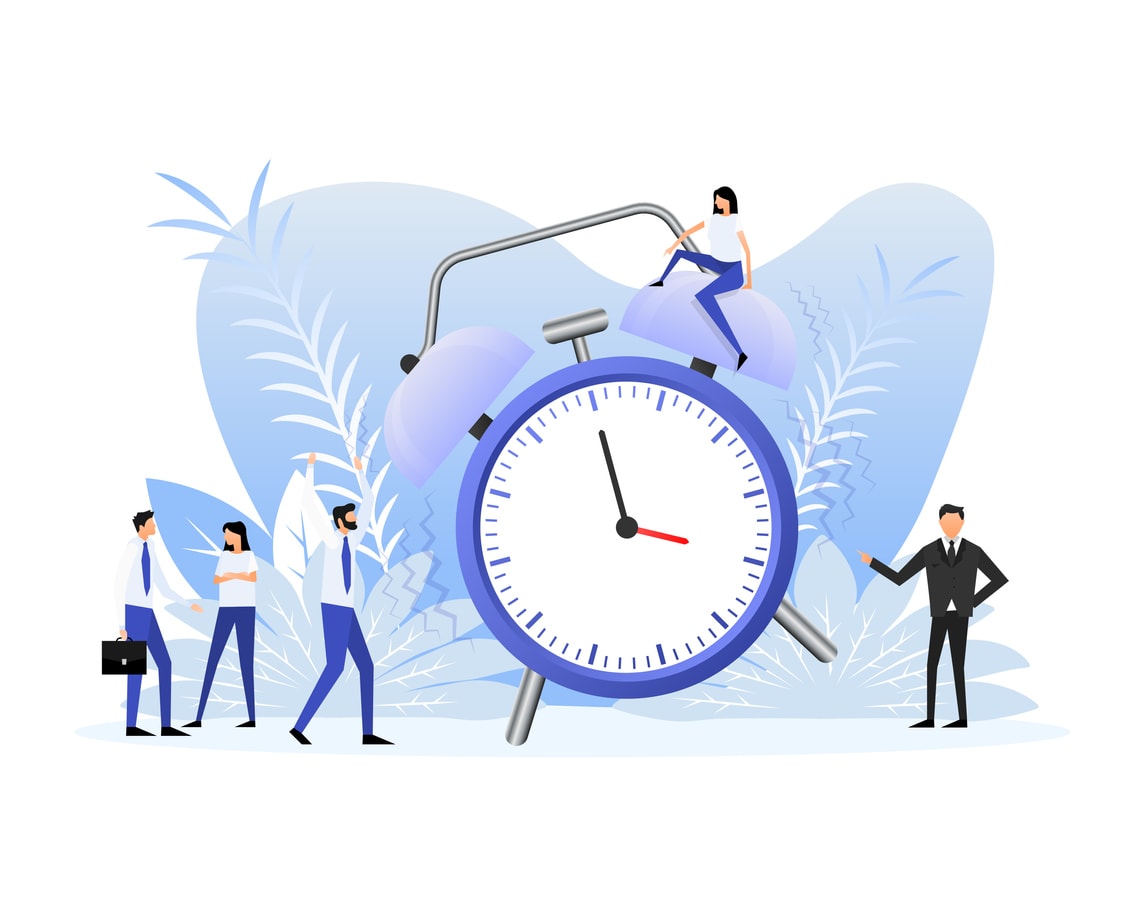Have you ever felt overwhelmed by the seemingly daunting task of taking meeting minutes? Don’t worry, you’re not alone. But fear not, because meeting minutes play a crucial role in the success and organization of any meeting. In this blog post, we’ll provide you with a fresh perspective on meeting minutes, guiding you through understanding their importance, various meeting minutes templates, and best practices to make the process more manageable and efficient.
By the end of this blog post, you’ll have a comprehensive understanding of how to create effective meeting minutes using a suitable meeting minutes template that serves as a valuable asset for your organization. So, let’s dive in and make meeting minutes a breeze!
Key Takeaways
- Meeting minutes capture and document discussions, decisions, and actions taken during meetings.
- Templates should include key components such as date, time, location & attendees. Custom templates can incorporate branding elements for a consistent look.
- Writing effective meeting minutes requires preparation & planning. Active listening & note taking skills. Review/editing to ensure accuracy and confidentiality while avoiding common mistakes.
Understanding Meeting Minutes

Meeting minutes serve as a vital reference for attendees and absent members by recording discussions, decisions, and actions taken during meetings. They provide an official record of the meeting for its participants and can even act as a reference point in certain instances. The term “meeting minutes” originates from the “minute” notes taken during meetings, which are based on the board meeting agenda.
There are three main stages involved in taking meeting minutes: prior to, during, and post-meeting. Typically, the board secretary documents the board’s actions, decisions, and key deliberations in narrative form, in connection with the agenda. It’s essential to review previous board meetings to ensure accuracy and consistency in the documentation process.
The board chair or meeting facilitator approves the meeting minutes, which should mirror the agenda’s order and numbering, with attendees voting members actively participating in the process.
Types of Meeting Minutes Templates

Various meeting minutes templates cater to different types of meetings, such as board meetings, informal meetings, and project management meetings. There are formal and informal meeting minutes templates available. Formal meeting minutes employ formal language and are organized with the intent of being disseminated among all of the meeting participants post-meeting.
On the other hand, informal meeting minutes templates are designed to record decisions made at team meetings, without the need for formal approval. Choosing a template that aligns with your specific meeting type is crucial.
For example, the Simple Meeting Minutes template is ideal for basic meetings, as it centers on the objective of the meeting, agenda items, and following steps. Planning meeting minutes in advance is made easier by using templates, which help cover all crucial information.
Key Components of a Meeting Minutes Template

A well-structured board meeting template should include the following key components for meeting minutes:
- Date
- Time
- Location
- Attendees
- Agenda items
- Decisions made
- Action items
- Follow-up details
These standard components provide a framework for capturing the essential elements of a meeting and ensure that all important information is documented.
Action steps are discussed during the meeting which includes specific assignees and an approximate timeframe for completion. These steps prove beneficial as they either provide solutions or establish the following steps in the process. The organization, as well as the board, can benefit from legal protection by using a particular format and template for taking notes during board meetings. This will ensure accuracy along with proper recording of necessary details.
The minutes should include information regarding the actions taken by the board and a concise explanation of the rationale for the activity. To encapsulate the meeting’s major points related to the board’s decisions and actions, it’s advisable to use adjectives and adverbs when possible.
Creating Custom Meeting Minutes Templates
Customizing meeting minutes templates involves choosing the right format, incorporating branding elements, and adding additional sections as needed. This allows organizations to tailor their templates to their specific needs, ensuring that all relevant information is captured and presented in a consistent and professional manner.
Choosing the Right Format
The selection of an appropriate format for meeting minutes is of great importance as it facilitates the organization and structure of the notes, thus making them more comprehensible. When selecting an appropriate format for meeting minutes templates, one must take into consideration the type of meeting, the size of the meeting, and the desired outcome. Before preparing for meetings, board secretaries should examine the formats other organizations have successfully used for nonprofit board meeting minutes.
Utilizing a meeting template for formal conversations provides the necessary structure, thereby making it easier to organize and review the meeting notes afterward. Key information like the meeting’s date and time, names of attendees, discussed topics, and decisions made should be included in the template.
Incorporating Branding Elements
Incorporating branding elements into meeting minutes contributes to a consistent and professional aesthetic for the document. It also facilitates the identification and recognition of the meeting minutes, making them easily distinguishable from other documents. The company’s logo, colors, fonts, and other design elements can be used to incorporate branding elements.
For instance, a company logo can be used as a header or footer on the document, and the company’s colors can be applied to the text and background. Additionally, fonts can be employed to create a unified look and feel, ensuring that the meeting minutes reflect the organization’s identity and values.
Adding Additional Sections
Adding extra sections to meeting minutes templates can help capture more specific information or cater to unique requirements of the organization. Including an action items list, a list of attendees, and a summary of the meeting are potential additional sections that can be added to meeting minutes templates.
When selecting the appropriate format for the supplementary sections, one should consider the type of data to be included, the duration of the meeting, and the target audience. Technology can be employed to facilitate the additional sections, such as through the use of meeting minutes templates, online collaboration tools, and video conferencing.
Tips for Writing Effective Meeting Minutes

Writing effective meeting minutes requires thorough preparation, active listening, and careful review and editing of the notes. By adhering to these best practices, you can document all crucial points and create accurate, comprehensive meeting minutes that become a valuable asset for your organization, available for future reference.
Good meeting minutes should include the meeting date, time, location of the meeting, and the next meeting date details, as well as the previous meeting minutes for reference.
Preparation and Planning
Adequate preparation for meeting minutes is essential for an efficient meeting. The secretary should:
- Review the minutes of the previous meeting
- Gather any pertinent documents before the meeting
- Collaborate with the board president to establish and finalize the agenda
Planning and preparing for meetings helps capture all pertinent information and present it in an organized, consistent manner.
When assuming a new role as minutes-taker or secretary, it is important to discuss expectations with the Chair of the committee or board in order to understand their desired level of detail and the role to be played during the meeting. This approach ensures that the meeting minutes clearly and concisely reflect the board’s intentions and accurately record the proceedings.
Active Listening and Note-Taking

Active listening and note-taking are essential in order to ensure that all attendees of a meeting are heard and that the meeting’s goals are achieved. Note-taking aids in documenting all crucial points for future reference. When engaging in active listening and note-taking, it is recommended to:
- Pay attention to body language
- Ask clarifying questions
- Summarize key points
- Take notes in an organized manner
By following these practices, you can effectively engage in active listening and note-taking during meetings.
To ensure effective note-taking, consider utilizing the following strategies:
- Abbreviations and symbols
- Recording key words and phrases
- Implementing a template to structure notes
- Being mindful of writing down too much information
- Paying attention to body language
- Summarizing key points
These strategies contribute to the creation of accurate, comprehensive meeting minutes, which become a valuable organizational asset.
Reviewing and Editing
It is vital to protect the confidentiality of speakers while upholding a consistent public voice when composing and revising meeting minutes. To achieve this, follow these guidelines:
- Refrain from using direct quotations
- Employ gender-neutral language
- Use precise and succinct language when reviewing and editing the minutes
- Avoid technical terms
- Review for correctness
- Ensure that the minutes accurately encompass any key points, action items, and opportunities discussed during the meeting.
Reviewing meeting minutes while the information is still fresh helps to guarantee accuracy. The ideal candidate for the dedicated note-taker role should be capable of capturing relevant details accurately and promptly. By following these best practices, you’ll be able to create accurate and comprehensive meeting minutes that serve as a valuable asset for your organization.
Utilizing Technology for Meeting Minutes

Technology, such as meeting management software and recording devices, can streamline the process of taking, storing, and sharing meeting minutes. Various technologies are available for recording and managing meeting minutes, including:
- Board portal software
- Smartphones
- Audio recording devices
- Cameras
- Cloud-based membership management systems
Utilizing meeting management software can optimize the process of taking, storing, and sharing meeting minutes. Some benefits of using meeting management software include:
- Publishing the minutes as a web page and providing access only to the committee or Board members
- Facilitating the process of distributing and approving minutes electronically
- Enhancing the efficiency of the meeting minute-taking process and saving time
BoardEffect is an example of meeting management software that offers these features. By leveraging technology, you can streamline your meeting minutes and improve overall productivity.
Explore virtual meeting software AI tools
Many virtual meeting tools have built-in note-taking and meeting minute functionality. For example, Kumospace, a premier virtual meeting software, is making meetings more efficient. One thing that sets Kumospace apart is its cutting-edge AI features that revolutionizes the meeting experience. With automatic transcription and meeting summary capabilities, Kumospace ensures that no valuable insight or information is ever lost in the digital ether. As participants engage in discussions, Kumospace's AI diligently transcribes the conversation in real-time, providing an accurate and easily accessible record of the meeting. This not only aids in enhancing communication but also fosters inclusivity by catering to various learning styles. Moreover, the AI meeting minute feature condenses key takeaways and action items, making post-meeting follow-ups a breeze. In a world where effective communication is paramount, Kumospace shines as the go-to platform for seamless, efficient, and productive virtual meetings.
Common Mistakes and How to Avoid Them

Avoid common mistakes in meeting minutes, such as including irrelevant details or personal opinions. Ensuring your meeting minutes accurately reflect the board’s true intentions and serve as an official, legal record requires adherence to governance best practices and the use of well-structured templates.
Some common errors to avoid when composing meeting minutes include:
- Incorporating extraneous details or personal opinions
- Not adhering to a template
- Not taking notes during the meeting
- Not reviewing and editing the minutes
- Not leveraging technology
Following the tips and best practices discussed in this blog post can help you avoid common mistakes, resulting in effective, well-structured meeting minutes that add value to your organization.
Summary
In conclusion, effective meeting minutes play a crucial role in the success and organization of any meeting. By understanding their importance, utilizing various templates, and following best practices, you can streamline the process of taking, storing, and sharing meeting minutes. Embracing technology can further optimize this process, ensuring that your meeting minutes are accurate, comprehensive, and professionally presented.
Don’t let the task of taking meeting minutes overwhelm you. With the right approach, tools, and techniques, you can master the art of creating effective meeting minutes that serve as a valuable asset for your organization. So, go ahead and transform your meeting minutes into a breeze, and watch your meetings become more organized and productive than ever before!
Frequently Asked Questions
To write meeting minutes, include the date and time of the meeting, the names of participants and those absent, acceptance or corrections/amendments to previous meeting minutes, and decisions made on each agenda item, such as actions taken or agreed upon and next steps. Use a professional tone throughout and provide a clear conclusion in the first sentence.
Yes, there is a Meeting Minutes template in Word. You can find it by either searching for the term in the File > New section or browsing the templates under the "Meeting Minutes" category. Once you select a template, customize it to suit your needs and fill in the necessary details such as the meeting date, time, location, attendees, and agenda items.
The meeting minutes should include the type of meeting, organization name, date and time, location, attendee names, approval of previous meeting minutes, motions and votes, and meeting time and signature.
In order to write the minutes of a meeting PDF, include the list of attendees, issues raised and related responses, calendar or due dates, actions and tasks for everyone, decisions of participants, and the most important matters discussed. Make sure to use a professional tone and structure your minutes in a concise and clear manner. Record any unfinished and new business, and any other topics that are discussed.
Meeting minutes serve as an official record of the meeting and a source of information for those who couldn't attend, acting as a reference point in certain instances.





